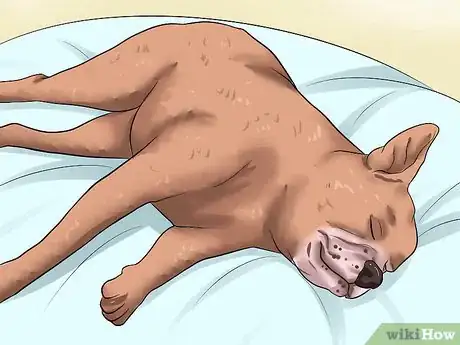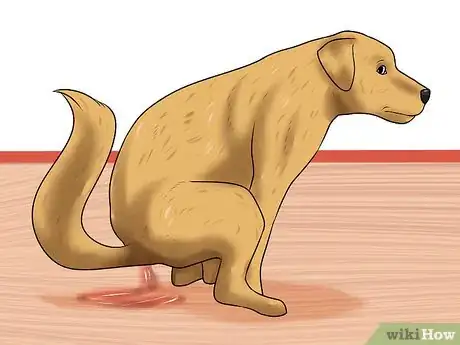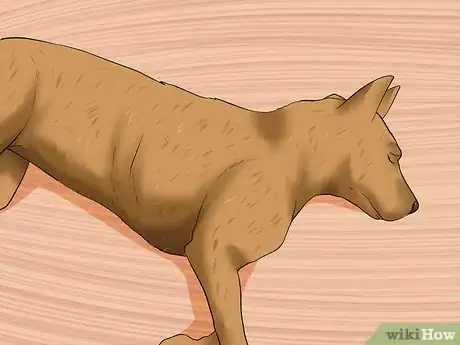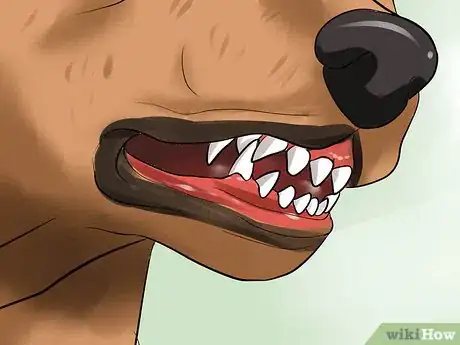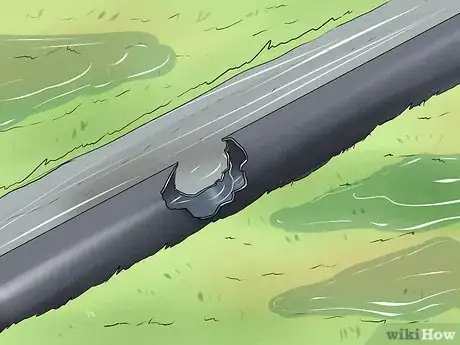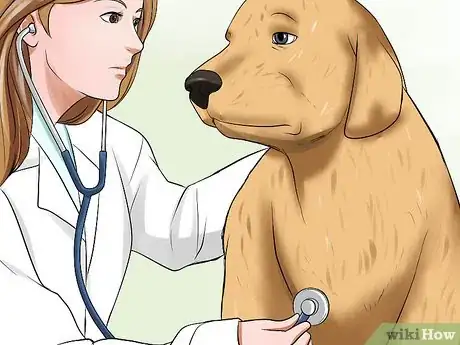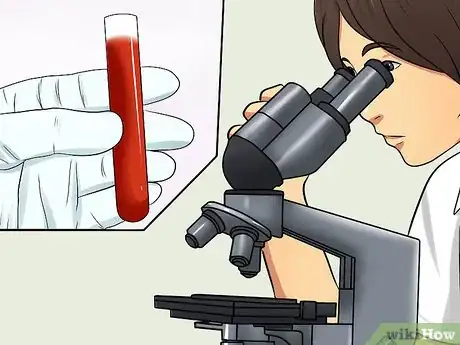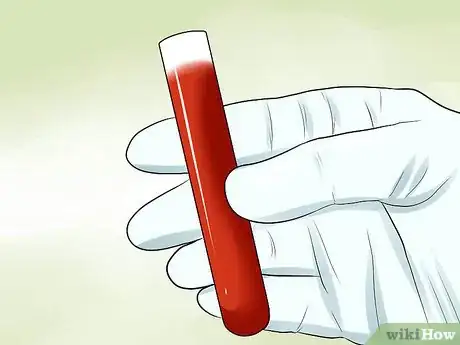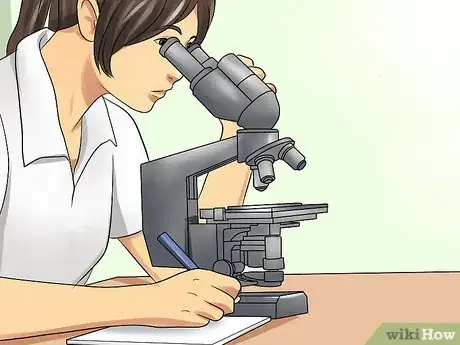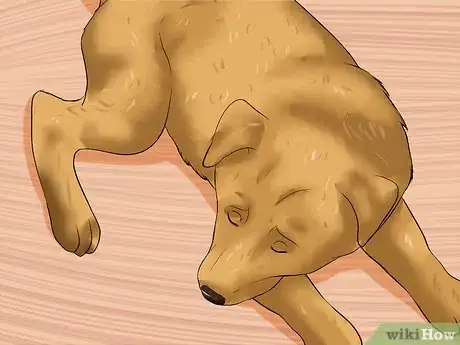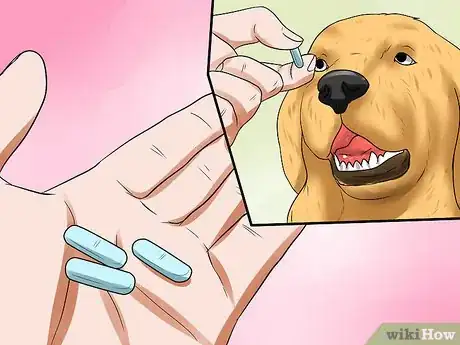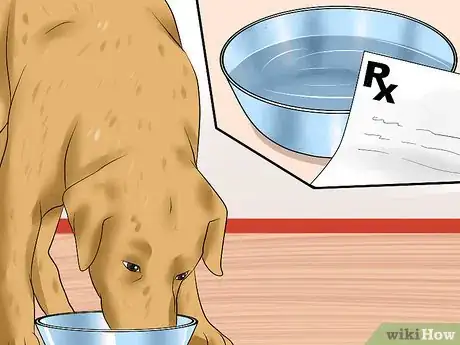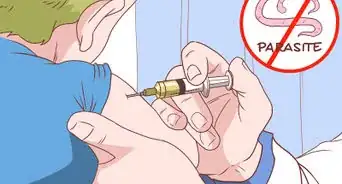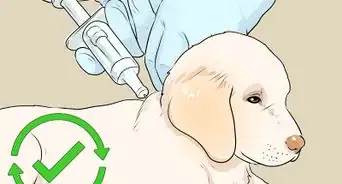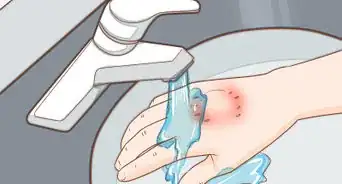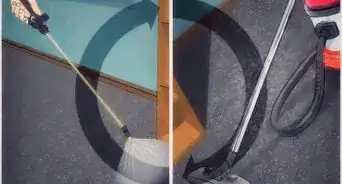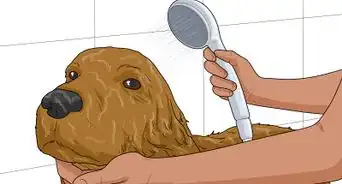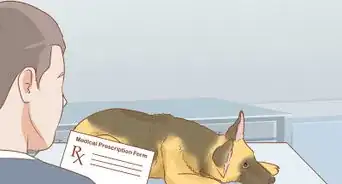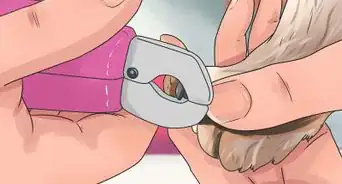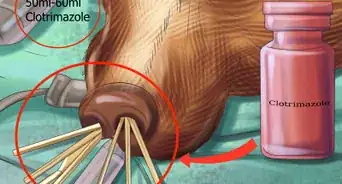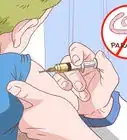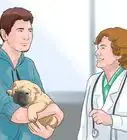This article was co-authored by Pippa Elliott, MRCVS. Dr. Elliott, BVMS, MRCVS is a veterinarian with over 30 years of experience in veterinary surgery and companion animal practice. She graduated from the University of Glasgow in 1987 with a degree in veterinary medicine and surgery. She has worked at the same animal clinic in her hometown for over 20 years.
This article has been viewed 13,206 times.
Leptospirosis is an infectious bacterial disease that dogs can pass onto people. It can progress quickly and it may even be fatal for your dog, so prompt treatment is important. If you suspect that your dog has leptospirosis, then take him to see a veterinarian right away. Leptospirosis has some mild symptoms in the beginning and some more severe symptoms if the disease progresses or becomes acute.
Steps
Checking for Symptoms
-
1Look for early, mild symptoms. After a dog has been infected with leptospirosis, the first symptoms will take about one week to appear. Early signs of leptospirosis may not be easy to detect, but a dog that has just been infected with leptospirosis may have symptoms that include:[1]
- fever
- lethargy (low energy and sleeping more than usual)
-
2Watch for acute symptoms. If a dog has the acute (sudden, serious illness) form of leptospirosis, then the condition can kill the dog within 48 hours. Seek immediate veterinary attention for a dog with acute symptoms of leptospirosis. Acute symptoms may include:
- profuse vomiting
- liquid bloody diarrhea
- collapse
- shock
- loss of consciousness
- dark urine
- jaundice (yellowing of the gums and/or the whites of the eyes)
- extreme thirst
Advertisement -
3Pay attention to moderate symptoms. If the dog has a less severe form of leptospirosis, then he may have some moderate symptoms. Even though the symptoms may not seem too serious, you will still need to seek veterinary treatment for your dog dog. Some symptoms of moderate leptospirosis include:
- fever
- vomiting
- diarrhea
- thirst
- weight loss
-
4Keep in mind that leptospirosis may have a sudden or slow onset. Leptospirosis can cause a sudden severe illness or develop over time. Leptospirosis also shares some of the same symptoms as other conditions, such as distemper and infectious canine hepatitis, so you may want to consider other possible causes of your dog's illness as well.[2]
- If you even suspect that your dog is ill, then take him to see a veterinarian as soon as possible.
-
5Consider your dog’s environment. Leptospira bacteria enters the dog's body through damaged skin or from swallowing the bacteria. Dogs that are exposed to moist environments and rats are at a higher risk of developing leptospirosis. Working or hunting dogs are also at increased risk due to minor cuts and scrapes that they get from being outside and doing their jobs.[3]
Taking Your Dog to the Veterinarian
-
1Take your dog to see a veterinarian if you notice any symptoms. If you think that your dog may have leptospirosis, then take him to see a veterinarian right away. Tell the veterinarian about your suspicions as well so that the veterinarian and veterinary technicians can protect themselves.[4]
- Avoid contact with the dog’s urine as well and wash your hands after having any contact with the dog (petting, holding, etc.).
-
2Allow the veterinarian to perform a full blood panel. The vet may want to run a blood panel to confirm a diagnosis of leptospirosis and also to look at your dog's liver and kidney function. If a blood test is negative and leptospirosis is still suspected, then the vet may need to repeat the test in two weeks to see if there is an increase in the antibodies. This may indicate the dog’s body is trying to fight off the disease.[5]
-
3Request a polymerase chain reaction (PCR) test. Another way to confirm leptospirosis is for the veterinarian to run a PCR on your dog’s blood or urine. This test can also confirm a diagnosis of leptospirosis, but it may take a while longer because samples often have to be sent to a lab.[6]
-
4Ask about checking your dog’s urine under a microscope. A third option is to examine a urine sample under a low-light microscope. Inspecting the urine this way may allow the lab technician to see the spiral shaped leptospira and give a positive diagnosis. However, this method is not as accurate or as safe as the other methods of checking for leptospirosis.[7]
-
5Be aware that your dog may need to be isolated. If you or your veterinarian suspect leptospirosis, then the veterinarian will need to isolate your dog. This is due to the danger that the disease poses to other animals and humans. The veterinarian and veterinary staff will also need to wear protective clothing when caring for your dog.[8]
-
6Administer antibiotics. A round of antibiotics are the most common treatment for canine leptospirosis. Your dog’s veterinarian will most likely administer antibiotics even if a diagnosis of leptospirosis is not yet confirmed. Your dog will need to be on antibiotics for two weeks.[9]
- Doxycycline is often administered to dogs with leptospirosis, but penicillin may also be given at first if the dog does not tolerate doxycycline well. However, the dog will need a full two week dose of doxycycline to recover.[10]
- In some cases, a dog may need to be kept at the veterinary clinic for treatment and monitoring, so you may not need to worry about administering the antibiotics yourself. But if you are allowed to take your dog home, then make sure that you administer the antibiotics exactly as your veterinarian has instructed. Do not stop giving them until the medicine is gone and your veterinarian has said it is okay to stop.
-
7Get your dog treated for complications of leptospirosis. Kidney and liver failure are possible complications of leptospirosis and these conditions may require treatment as well. To treat complications of leptospirosis, your dog's veterinarian may:[11]
- Balance your dog’s fluids to regain normal electrolyte balance.
- Give your dog medicine to stop him from vomiting.
- Administer medications to help support your dog’s liver.
- Perform hemodialysis if your dog’s kidneys have failed.
Warnings
- Dogs infected with leptospirosis may have the disease in their urine for three months after they are infected, so protect yourself even after your dog seems healthy again. Wear gloves and use disinfectant spray to clean up after your dog and see a doctor right away if you start to feel sick.⧼thumbs_response⧽
References
- ↑ http://www.petmd.com/dog/conditions/infectious-parasitic/c_multi_leptospirosis
- ↑ http://www.petmd.com/dog/conditions/infectious-parasitic/c_multi_leptospirosis
- ↑ http://www.merckvetmanual.com/mvm/generalized_conditions/leptospirosis/leptospirosis_in_dogs.html
- ↑ http://www.merckvetmanual.com/mvm/generalized_conditions/leptospirosis/leptospirosis_in_dogs.html
- ↑ http://www.merckvetmanual.com/mvm/generalized_conditions/leptospirosis/leptospirosis_in_dogs.html
- ↑ http://www.merckvetmanual.com/mvm/generalized_conditions/leptospirosis/leptospirosis_in_dogs.html
- ↑ http://www.merckvetmanual.com/mvm/generalized_conditions/leptospirosis/leptospirosis_in_dogs.html
- ↑ http://www.merckvetmanual.com/mvm/generalized_conditions/leptospirosis/leptospirosis_in_dogs.html
- ↑ http://www.merckvetmanual.com/mvm/generalized_conditions/leptospirosis/leptospirosis_in_dogs.html
About This Article
Before diagnosing canine leptospirosis, watch for early signs of a bacterial disease, such as fever or being low-energy, which will appear within the first week of being infected. Additionally, watch for acute symptoms, such as vomiting, bloody diarrhea, collapse, or extreme thirst, which can indicate a more serious version of the illness. If you notice any of these symptoms, take your dog to the vet as soon as possible to get a diagnosis. Make sure to discuss with your vet whether additional testing, such as a blood panel, is necessary to rule out an infection. To learn how to treat your dog for complications of leptospirosis, read more from our Veterinarian co-author.
